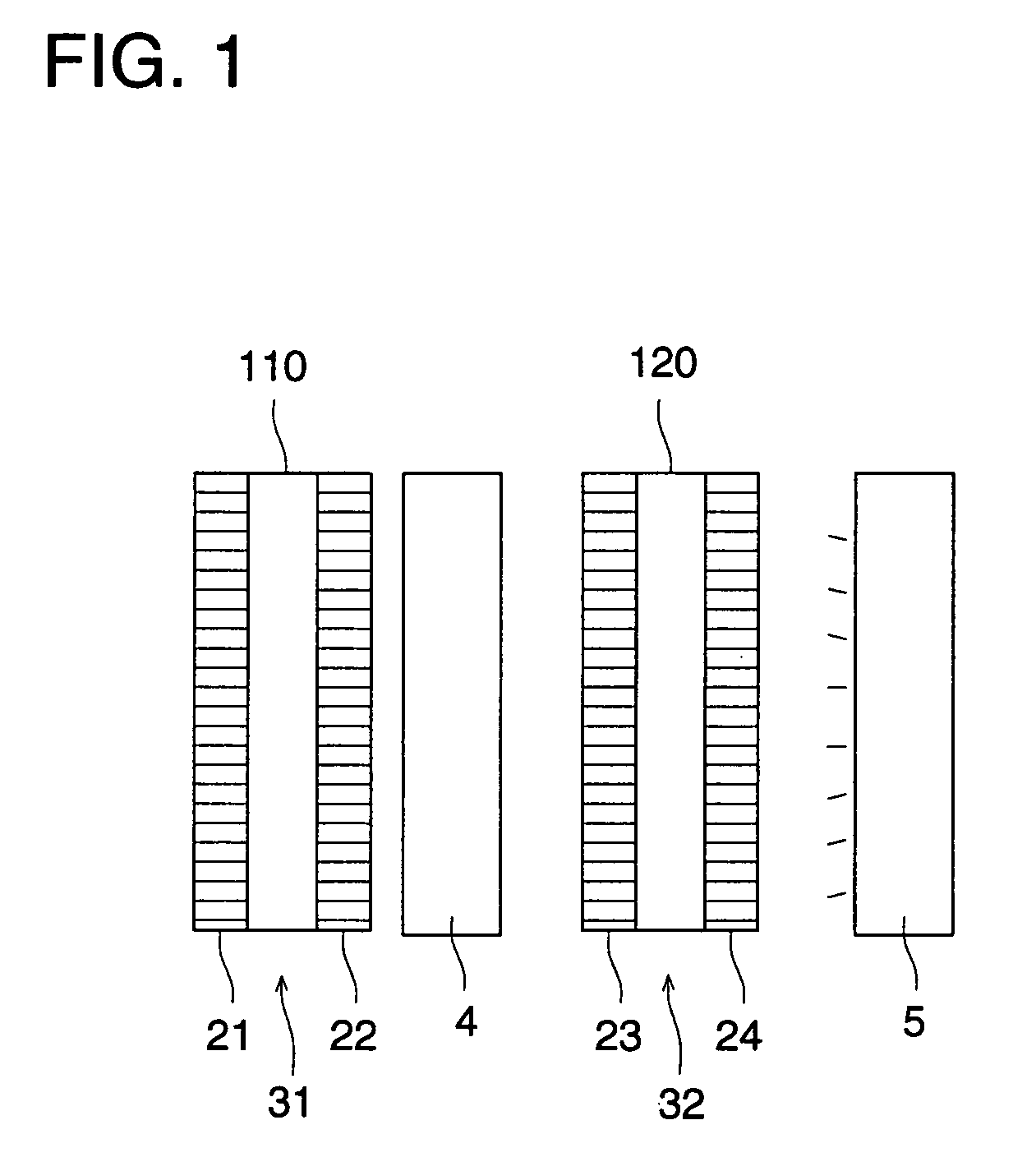Cellulose ester film and production method of the same
- Summary
- Abstract
- Description
- Claims
- Application Information
AI Technical Summary
Benefits of technology
Problems solved by technology
Method used
Image
Examples
Embodiment Construction
[0038]The cellulose ester film according to the invention comprises flat particles having aspect ratio of 2 to 7.
[0039]Listed as cellulose esters based on the present invention are cellulose triacetate, cellulose diacetate, cellulose acetate butyrate, cellulose acetate propionate, and the like. In the case of cellulose acetate, preferably is one having a particular degree of polymerization of 250 to 400 as well as a bonded acetic acid ratio of 54 to 62.5 percent. Cellulose triacetate having a bonded acetate acid ratio of 58 to 62.5 percent of cellulose triacetate is more preferred due to its higher base strength. Cellulose triacetate synthesized from cotton linter and one synthesized from wood pulp may be employed individually or in combination.
[0040]The cellulose acetate film preferably contains 50 weight % or more, further preferably 80 weight % or more of lower fatty acid ester of cellulose.
[0041]The larger amount of cellulose acetate synthesized from cotton linter, which exhibit...
PUM
| Property | Measurement | Unit |
|---|---|---|
| Length | aaaaa | aaaaa |
| Fraction | aaaaa | aaaaa |
| Percent by mass | aaaaa | aaaaa |
Abstract
Description
Claims
Application Information
 Login to View More
Login to View More - R&D
- Intellectual Property
- Life Sciences
- Materials
- Tech Scout
- Unparalleled Data Quality
- Higher Quality Content
- 60% Fewer Hallucinations
Browse by: Latest US Patents, China's latest patents, Technical Efficacy Thesaurus, Application Domain, Technology Topic, Popular Technical Reports.
© 2025 PatSnap. All rights reserved.Legal|Privacy policy|Modern Slavery Act Transparency Statement|Sitemap|About US| Contact US: help@patsnap.com

